
The phrase "environmental storytelling" seems to have entered the games discourse so quietly we were never really given a solid definition of it. It has been treated as a matter of "I know it when I see it;" and we see it scrawled on walls, placed in scattered objects, and designed into the literal “environment” itself. We just “know” when those things are used to convey narrative and define the world. But we could propose a stricter working definition:
Environmental storytelling is corpses posed for effect.
What got me thinking about this was playing The Witness.
Skeletons in the Wilderness
In the last few months, I played two games that involved walking through a 3D environment of managed wilderness, each making heavy use of environmental storytelling. One was The Witness, the other was Firewatch. (Before I continue, I should point out that I’ll be discussing some plot details for Firewatch in this piece, though obliquely.)
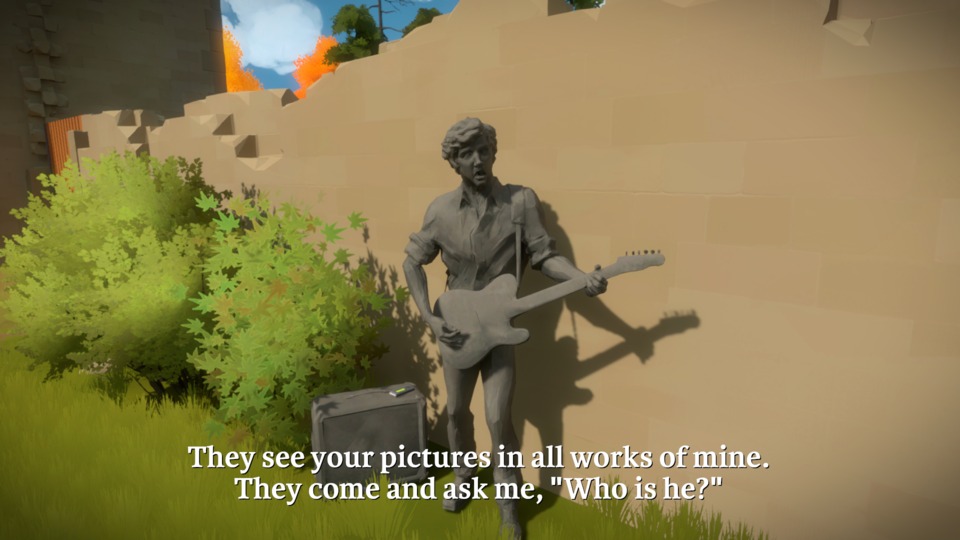
In the end, after playing through The Witness, I found that I really detested that game. Firewatch, meanwhile, is one of my favorite games of the year so far. I loved most of everything about it, including the ways in which it resembles The Witness. One of those features they have in common is environmental storytelling. And I realized that it is possible for one game to crassly misuse a technique that another game is elevating, even if they appear similar on the surface. It got me thinking about the history of dead bodies in video games; how strange and fragile of a narrative conceit they are at times, but also how important and useful they have been in some games. And that history, perhaps, is more interesting than the screed I have in my head about what’s wrong with the Witness.
But, to provide some context: In spite of superficially eschewing conventional plotted narrative, The Witness still feels the need to litter its world with audio logs and storytelling skeletons. The statues scattered across the game’s island are for all intents and purposes the same as the bleached skeletons that you find in any modern Fallout game: Human bodies posed by the environment designer to convey narrative information. While The Witness may not have a story or a plot as such, it definitely has narrative. It has ideas that it's trying to convey with its environment and the ever-present droning of talented voice actors reading snippets from Jonathan Blow's scrapbook of beloved quotations. Those statues that are everywhere, ham-fistedly pointing out some theme or another, are much like the little skeletal tableaux that litter any Fallout wasteland (whether Capital, Mojave, or Commonwealth). There is a longstanding tradition of death as a motif in video game environments, and The Witness fits neatly at the edge of it.
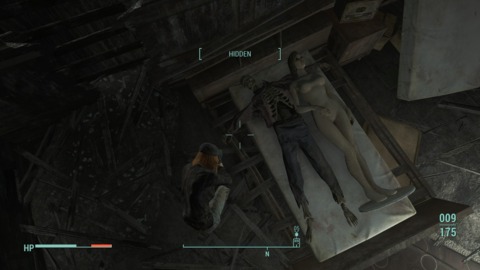
Modern Fallout is notorious for how central dead bodies are to their set dressing. Fallout is many things: An allegory about the ends of American jingoism; a platform for Chris Avellone’s ideas about storytelling; two skeletons holding hands on a bed. Oblivion and Skyrim share that tendency, littering tombs with dead adventurers and often putting bodies right next to journals explaining their demise.
While neither series is bad for doing this, they both could learn a lot from Dark Souls, which makes more effective use of corpsemanship to subtly impart a sophisticated understanding of the game world to the player. That game uses item placement to both tell stories and guide the player; items are shiny white beacons in a dark world, letting you know that wherever you find them is a place you can go to and loot. The very first item you pick up is delivered into your prison cell in the Undead Asylum along with a dead body, which really just raises more questions than it answers. From there on out, every single item that is just lying there on the floor is found on a dead body. The shape and appearance of the bodies themselves are incidental to the narrative. They are generic, desiccated, genderless grey forms. They are almost a floating signifier, a connection point between the item you find and where you find it. The dead body of a proud knight isn't regal, athletic, clad in mail; it's a grey clay doll of a human shape hunched over in a dark corner. But you find the soul of a proud knight hovering over it.
The Bones of the Buttresses
When we are not finding the corpses of people, we find the corpses of places. A big part of Gone Home’s novelty is the fact that its environment is exclusively lived-in rather than died-in. Bioshock Infinite, still limited to a protagonist that only interacts with the world through the barrel of a gun, almost seemed like it couldn’t cope with living spaces at all. It’s as if the skybound city of Columbia had to fall apart just so the game could ease into the comfortable mode of walking through hostile ruins. Dishonored, too, put the shadow of death around every corner of even its liveliest spaces; a noblewoman's party has dangerous sewers beneath it, deserted streets around it, silent bedrooms above it.
There is nothing new about this. Video Games have been about space for almost as long as they have been games. Colossal Cave Adventure was about a natural space, a real cave system in Kentucky. Games have been about dead space for almost as long as that: Zork, Adventure's spiritual successor, immediately transposes its cave system onto the Great Underground Empire, a lost civilization that left behind a maze of twisty passages (all alike) for the player to get lost in. Grave robbing and tomb-raiding became a recurring theme in numerous games that cast the player as a combat archaeologist.

The technology we have for building video games, as it stands now and as it has almost always been, can create a remarkable sense of place while still being remarkably limited when it comes to defining characters. The experience of creating parser-based interactive fiction, along the lines of Zork itself or its numerous modern descendants, bears this out starkly: A single, detailed NPC requires as much care in implementation (and as much volume of content) as an entire palace. Emily Short's Galatea, a game in which you have an extended (by video game terms) conversation with a single NPC, was a remarkable achievement in its time and remains impressive today.
An interactive character is usually a brittle representation, often teetering at the edge of unreality; architecture is much easier than psychology. Games that do make heavy use of interactive NPCs often run into discomfort when those characters are instrumentalized as gameplay tokens. BioWare RPGs since Mass Effect have had this perennial issue where the characters you actually want to have around are not necessarily the ones that you take with you into the game world, for the sake of party balance. Everyone loves Varric, but the game's mechanics often incentivize you to leave him on the bench.
In games, palaces are cheap and kings are expensive. But if you implement the palace, not the king, the resources you save from not implementing the king can be put to work implementing a whole other palace. Environmental storytelling is the trick that lets us have the palace as a narrative proxy for the king. Robert Yang has written about how two levels in Thief express differences in personality between two unseen characters by the differences in the layout of their respective mansions. At its best, architecture substitutes for psychology.
This technical bent which started out in Zork's time has become cultural and self-perpetuating. Look at the Oculus and other VR headsets; a device designed for looking out rather than looking at; a device designed to immerse in an environment rather than focusing on another subject. Place rather than character.
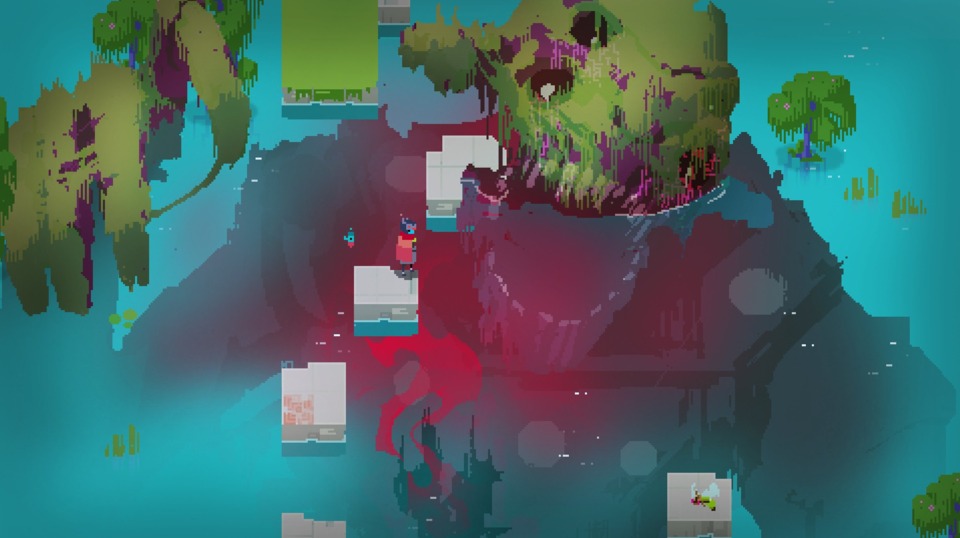
Death, dying, and their architects
In time, this self-perpetuating skew becomes a fetish, a fascination, a paraphilia. Another thread of video game history: Mario bumping into a flying Koopa once is all it takes to send you back to the start of the level, but the process of getting a little further each time can be intensely satisfying. This cycle, what game designers call the trial-failure-mastery loop, is built into video games from their earliest days. It got a convenient narrative wrapper: the player character “dies” each time, and cat-like, has a limited number of lives. This easy narrative solution, 30 years later, is a fetish: Steam reminds me every time I open it that I have the "Prepare to Die Edition" of Dark Souls installed, and that game is itself all about the weird relationship games have to death.
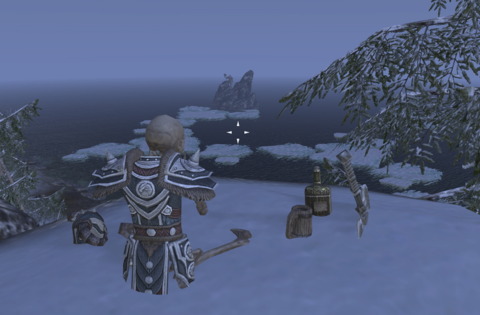
Perhaps this is where our morbid fascination with abandoned spaces comes from: The ever-presence of death as a narrative conceit, along with the medium's natural ability at working with place. It’s a combination that has proven both potent and popular. In an industry that has become all about selling agency to us when we’re having a hard time finding it elsewhere, the appeal of broken worlds is clear. Player characters, monsters of agency that we are, take well to damaged, barren worlds where there is no pesky social order to judge you for killing an innocent NPC just for the item he drops. There is nothing inherently wrong with this. Yes, the way (say) Call of Duty uses third-world war zones as playgrounds for hypermasculine, fetishistic violence is often tedious and trite. But games like Apocalypse World (a narrative-centric tabletop RPG), or even Dark Souls, explore this idea of the end of the world as an empowering environment in much more nuanced and clever ways.
The strength of this fascination takes me back to Firewatch. Firewatch is a game all about interacting with another character (so it certainly doesn’t dodge the challenges required to implement a complex NPC.) It's set in a national park, a semi-natural place that is still maintained and actively used by humans. Why, then, does it contain multiple spaces that are abandoned, left behind by people? At least in part, Firewatch seems to be about restoring the power of the dead body as a signifier. Yes, there's a dead body in Firewatch. But its use is a total inversion of how dead bodies are normally used in games; in Firewatch, the game leads up to the body, shows you who that person was before you find the corpse. The storytelling skeleton, so long a set-up, finally gets to be a payoff. After three decades of finding, looting, and creating corpses in video games, Firewatch has the player empathizing with one.
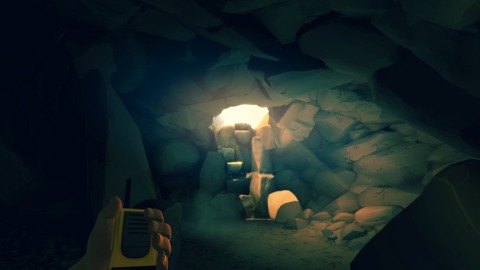
This, perhaps, is why Firewatch’s environmental storytelling worked for me while The Witness' just didn’t. Firewatch seems to understand the tradition it lives in; it participates in an ongoing conversation. The Witness, meanwhile, seems to apply those ideas almost as a reflex; video games have audio logs, so throw some in. It doesn't really have a story to tell so much as a narrative to push, a narrative about the triumph of Jonathan Blow's shallow ideas about Buddhist spirituality blended in with a heavy dose of Silicon Valley techno-utopianism. It pushes that narrative with tools that are well-worn in the games medium; but at the same time, it has no point of view on those tools. Just like its utopian leanings try to escape history, the way it uses the medium is outside the history of it. It "more closely resembles a minigolf course than a real place".
I'm not writing this to condemn the tradition of storytelling skeletons, or the history of how environmental storytelling has been used. Games developed their fascination with death through a process that is valid and important; making use of this history is one of the things that gave power to Firewatch, Oxenfree, Gone Home, Dark Souls and others. Firewatch is advancing a conversation that started when Zork took its players to the ruins of the Great Underground Empire. The Witness is listening to this conversation, but not really speaking or understanding.
And in this, it fails its audience; if you don’t participate in the history you’re mining for your storytelling techniques, you’re just reproducing, uncritically, what came before. This is not a problem unique to The Witness; we are constantly presented with games that take those ideas, the product of a decades-long conversation, as immutable received wisdom. But The Witness grates in that, for all its consciousness-expanding zeal, it’s actually inviting its players to not engage with or think about the traditions the game uses. We need games to be autopsies or funerals, examinations and celebrations of what came before. Regurgitation like The Witness is more along the lines of Weekend at Bernie’s, a morbid pantomime of propping up the dead for the entertainment of the living.
Bruno Dias is a game developer and writer based in São Paulo, Brazil. He writes interactive fiction and develops tools for doing so. His work can be found on Sub-Q Magazine and on his blog. He himself can often be found on Twitter. Make sure to listen to Bruno chat with Austin on this episode of Giant Bomb Presents!
67 Comments